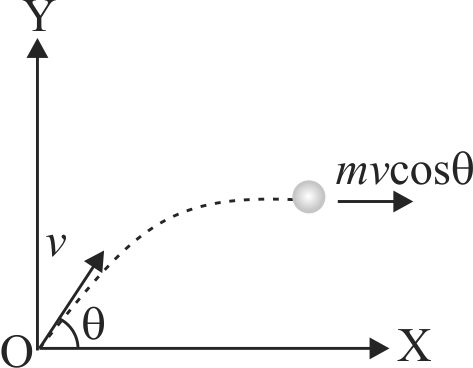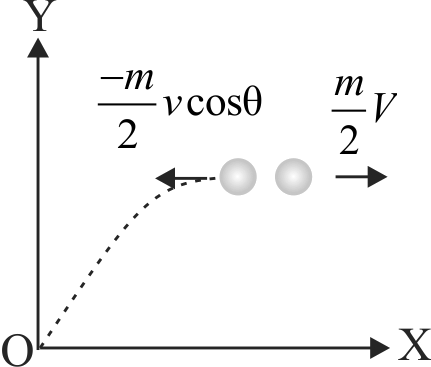365834 A shell is fired from a cannon with velocity \(v \mathrm{~m} /\) sec at an angle \(\theta\) with the horizontal direction. At the highest point in its path it explodes into two pieces of equal mass. One of the pieces retrace its path to the cannon and the speed in \(\mathrm{m} / \mathrm{sec}\) of the other piece immediately after the explosion is
365834 A shell is fired from a cannon with velocity \(v \mathrm{~m} /\) sec at an angle \(\theta\) with the horizontal direction. At the highest point in its path it explodes into two pieces of equal mass. One of the pieces retrace its path to the cannon and the speed in \(\mathrm{m} / \mathrm{sec}\) of the other piece immediately after the explosion is
365834 A shell is fired from a cannon with velocity \(v \mathrm{~m} /\) sec at an angle \(\theta\) with the horizontal direction. At the highest point in its path it explodes into two pieces of equal mass. One of the pieces retrace its path to the cannon and the speed in \(\mathrm{m} / \mathrm{sec}\) of the other piece immediately after the explosion is
365834 A shell is fired from a cannon with velocity \(v \mathrm{~m} /\) sec at an angle \(\theta\) with the horizontal direction. At the highest point in its path it explodes into two pieces of equal mass. One of the pieces retrace its path to the cannon and the speed in \(\mathrm{m} / \mathrm{sec}\) of the other piece immediately after the explosion is


